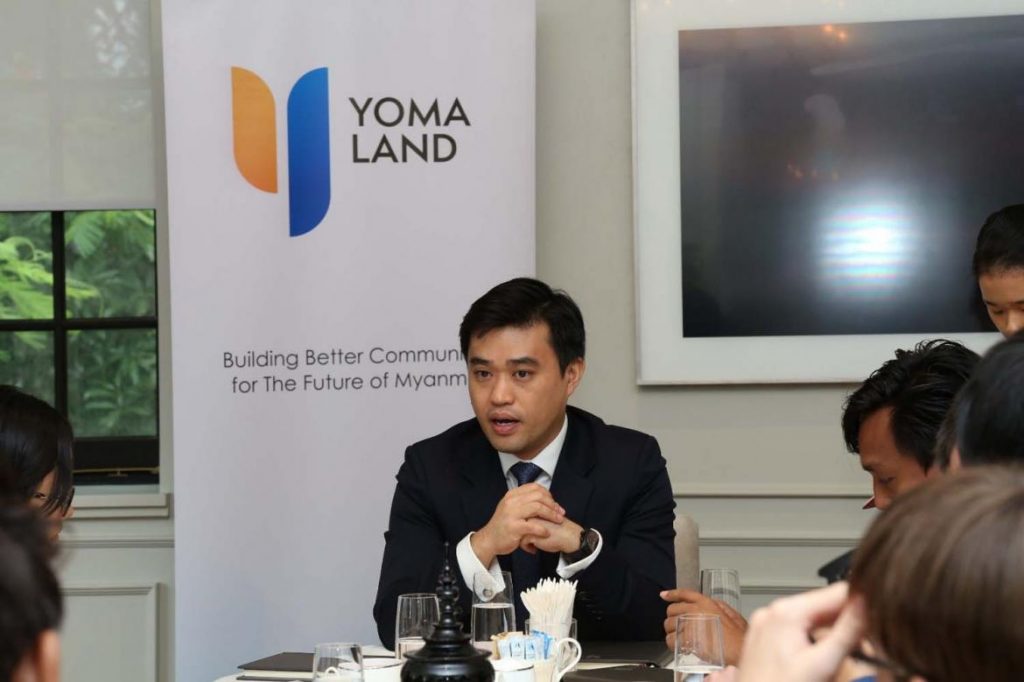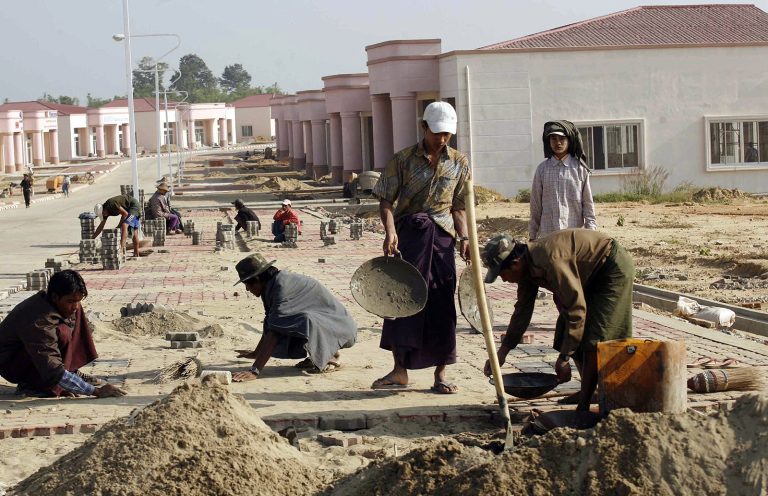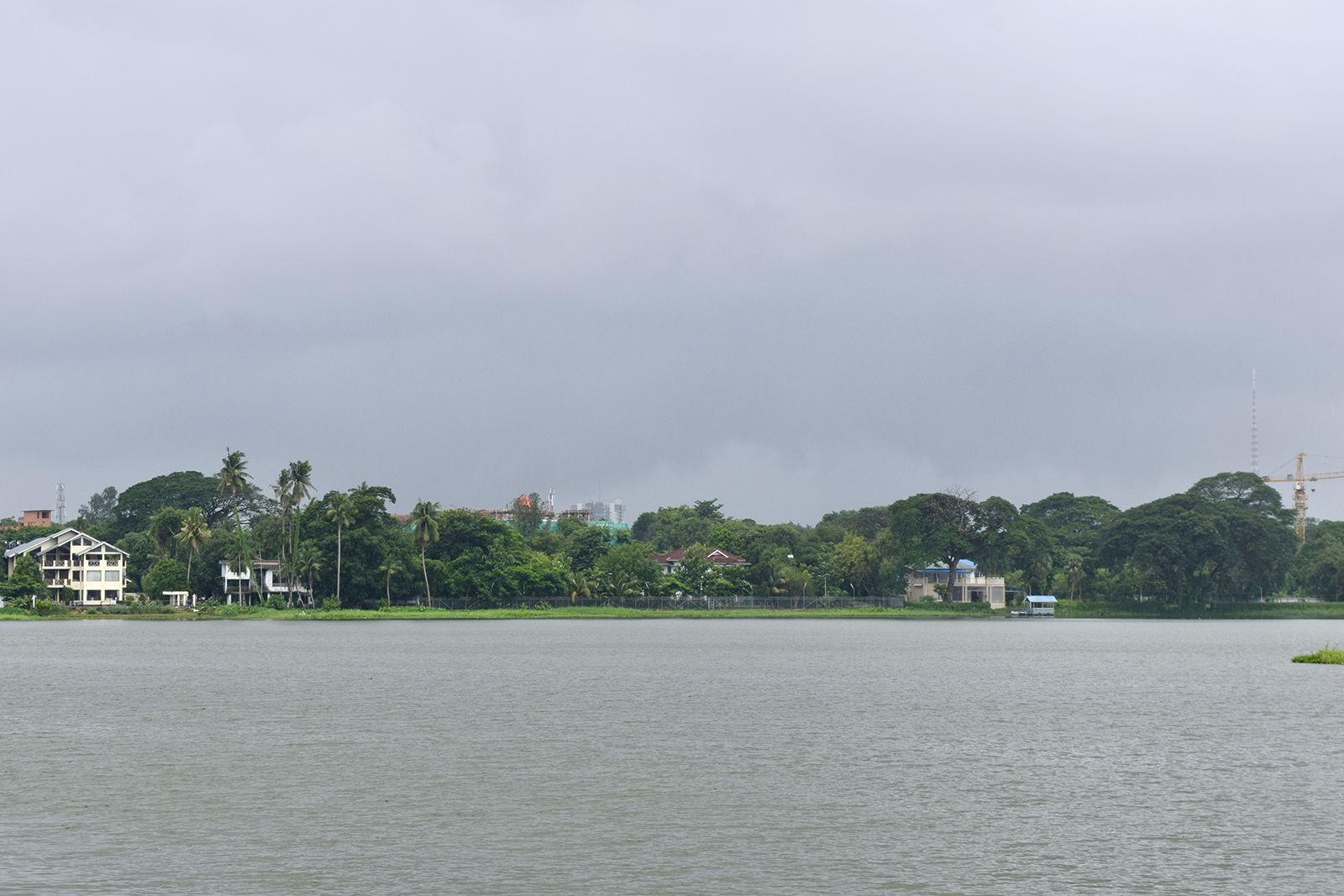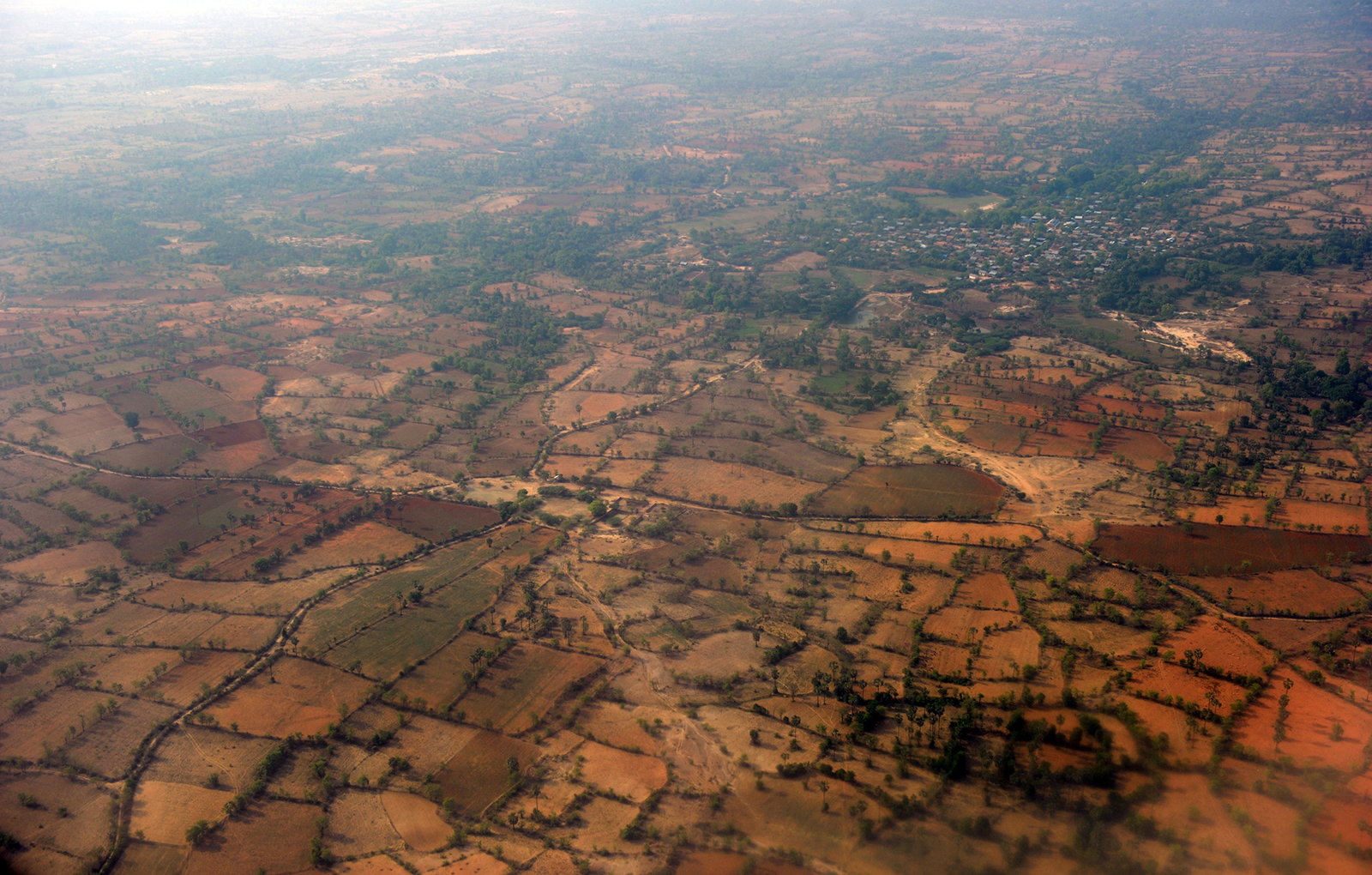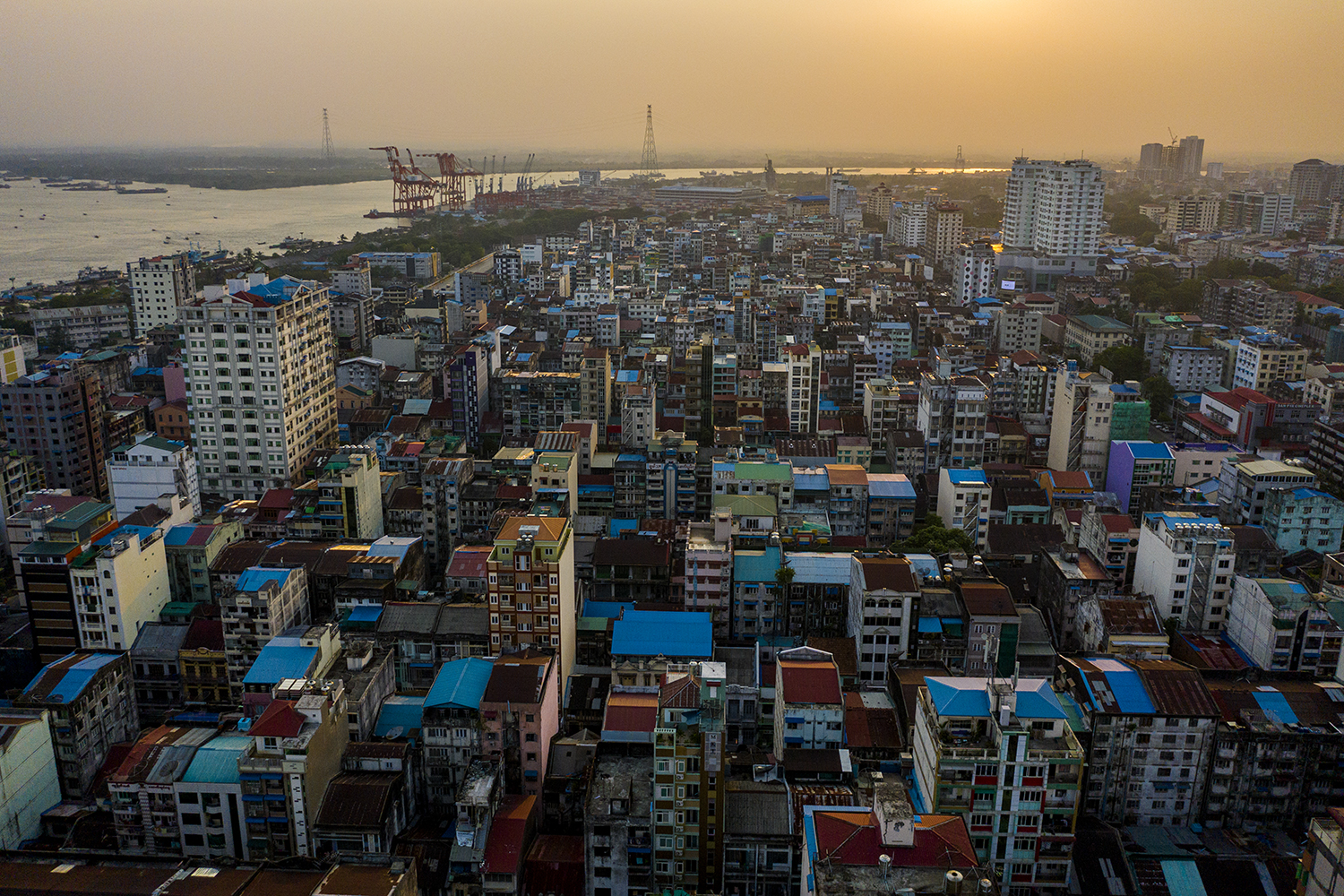Sluggish sales in the high end of the property market have prompted Yoma Strategic Holdings and First Myanmar Investment to move into “mass market” projects under the new brand Yoma Land.
By THOMAS KEAN | FRONTIER
IF YOU HAVE a stable job with a reasonable salary, it’s reasonable to expect that you can one day buy a decent home. But in Myanmar – or Yangon at least – you generally can’t, because you typically have to pay in cash upfront.
Banks have only recently begun offering home loans, but finance remains both difficult to access and expensive, with 13 percent the typical interest rate. Repayment periods are short – often just seven years – and mortgages require a large deposit.
Combined with high land prices, the lack of financing has created a housing affordability problem in Yangon. Attempts to address the issue, such as through government-financed projects, have so far not made much progress.
And the scale is huge. In March, Myanmar’s national parliament, the Pyidaungsu Hluttaw, approved a K189 billion ($142 million) loan from the Japan International Cooperation Agency to finance nearly 12,000 affordable dwellings ahead of the 2020 elections. The government, though, estimates that Myanmar will need more than 4.8 million units over the next two decades, including 1 million in Yangon.
Support more independent journalism like this. Sign up to be a Frontier member.
For Mr Cyrus Pun, the managing director of Yoma Land, that’s an opportunity; a large, under-served market that’s crying out for affordable, quality housing.
Launched on June 26, Yoma Land is a new brand encompassing the real estate businesses of Singapore-listed Yoma Strategic Holdings and Myanmar-listed First Myanmar Investment, both of which are linked to the Pun family. These projects are presently skewed to the higher end of the market, including Pun Hlaing Estate, StarCity and Yoma Central, where apartments in the “ultra luxury” Peninsula Residences start at US$1.2 million.
But Yoma Land is more than a rebranding, because the company is also diversifying into what Pun calls the “mass market”. He wouldn’t give further details on specific projects, except to say they would be in Yangon – a more detailed announcement is expected in the next few months – but at a briefing on June 26 he explained how Yoma planned to go about delivering quality yet affordable housing.
But first, what is mass market?
“My definition is very simple … I’m really targeting those people who do not necessarily have a huge amount of savings, they do not have family wealth, they have a decent job with a stable salary, but they’re nowhere near able to buy at the moment. That’s what I’m trying to service,” he said.
The starting point for Yoma Land is research; it’s already conducting focus groups, doing surveys and speaking to target customers about what they value most. It can then design projects around serving those needs and spending money most efficiently in order to keep the cost down.
“That’s one thing that I think will set us apart – listening to our customer,” he said. “Quite often, developers [in Myanmar] build and they don’t think so much about the process. They are looking at current trends and just copying other people, doing what others are selling.”
Ms Catherine Hendren, a research analyst with Myanmar Real Estate and Construction Monitor, said the move into more affordable projects was “savvy” given the slowdown in demand for high-end units.
“We estimate around 70 percent of residential units produced by the private sector in Yangon generally target higher-income groups,” she said. “Low-cost and affordable housing continues to be one market segment where supply falls well short of demand … that market is not served very well in Myanmar, at least not with quality housing that can be sold on and used as investments.”
But Yoma Land has some advantages over most other developers. Its ability to tap into international financing and draw on the management, design and building expertise developed through its existing projects is probably unique.
It also has a generally good – though by no means impeccable – reputation in terms of construction quality. Pun was adamant that the move into mass market would not result in “low quality” projects.
“For each price segment we want to deliver the best possible quality that that price range can deliver … even though you’re paying a low price at least you should get a product that’s built properly and safely.”
Financing is a key focus. Yoma Land will develop products based around what its target market can afford. Extending the repayment period for home loans from seven or 10 years to as much as 30 years, as Yoma Land hopes to do, will open the market to new buyers. Pun said that he also expected interest rates to decline from the present high levels as the economy matures and lower inflation becomes the norm.
“We feel that we’re in a strong position to help a lot of people buy property. We also have connections to the financing community … the concept is to use that network to provide better financing terms for the buyers.
“Whatever the [local] banks cannot fulfil or what the regulations do not allow, we as the developer will also engineer financing packages to help bridge whatever gap there is.”
Pun said the provision of affordable housing was important for equality and social cohesion, and that the longer the issue was left unaddressed the more serious it could become.
But the move into more affordable housing is also due to weaknesses in the rest of Yoma’s property portfolio. Revenue from Yoma Strategic Holdings’ real estate business fell from SG$66.4 million (US$48.70 million, K68.70 billion) to SG$42.6 million ($31.24 million) in 2018, due to lower property sales, and contributed to a 20.4 percent decline in profit.
In part this reflects the company’s strategy of transitioning from a real estate developer into a diversified conglomerate, which prompted it to set a target of having at least 50 percent revenue from non-real estate businesses by 2020. But the fact it achieved this goal two years ahead of schedule – real estate was just 39 percent of revenue in 2018 – is indicative of the underperformance of its property portfolio.
In a May 31 note to investors, analyst Mr Vijay Natarajan said the slowdown in the real estate business was the main reason for Yoma Strategic Holdings’ disappointing profit result, with sales sluggish due to overall weak demand for mid-to-high end projects.
“In light of higher demand for mass market projects, it has redesigned its existing unit offerings in Galaxy Towers at StarCity to cater to demand for smaller, affordable units,” he wrote. “Yoma also plans to launch a new project, ‘City Loft’, in StarCity at slightly lower price points compared to Galaxy Towers.”
Whether City Loft is the upcoming “mass market” project remains to be seen, but Hendren said it was exciting to see what Yoma would come up with.
“Yoma has the reputation and clout in Myanmar to be an important player in the mass market, but it is not the only company eyeing this move to affordability,” she said. “Yoma mentioned innovation. I’m interested to see if some of these more innovative construction methods take off in Myanmar – a few companies are venturing into this area.”


